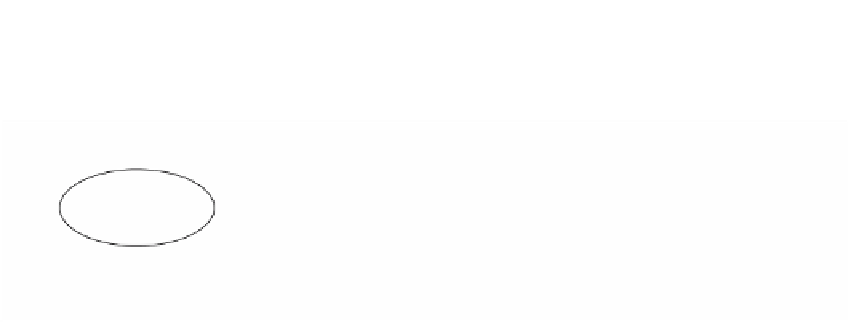Graphics Reference
In-Depth Information
folds that are
not
combinatorial manifolds. Subsequently, Andrew Casson proved in
1985 that there exist four-dimensional topological manifolds that could not be trian-
gulated by
any
simplicial complex. There is another famous related problem, origi-
nally a conjecture, called the
Hauptvermutung
. This problem, which was basically a
question about the uniqueness of triangulations, asked if any two proper triangula-
tions of a manifold had isomorphic subdivisions. Here also the answer is no. In dimen-
sions larger than four, there are well-defined invariants that determine whether the
answers to the above questions are yes or no.
Note 4.
A space that is a surface using the definition above is also called a
closed
surface. The adjective “closed” in the context of surfaces or manifolds means that
there is no boundary. Section 6.6 will briefly discuss the definition and classification
of more general types of surfaces, such as surfaces with boundary like the unit disk
and the torus with two open disks removed (see Figure 6.16), and noncompact sur-
faces with or without boundary, such as the open unit disk or that disk with an open
disk removed from its interior. We also repeat for emphasis that in this section, unless
stated otherwise, a space that is called a “surface” is a compact and connected space.
After these preliminary remarks about surfaces we start the main task of this
section, which is their classification. We would like a list of all possible surfaces (up
to homeomorphism) and, if possible, a simple characterization of each. The basic step
will involve taking a given arbitrary surface, cutting it into pieces, and then reassem-
bling the pieces into some recognizable form. As we cut we will use labels to remem-
ber that the two edges that are created are actually identified in the surface. Our proof
of the classification theorems will therefore involve the manipulation of lots of labeled
complexes. This is why we discussed such complexes in the previous section. In our
case here the complexes will actually be planar and the labeling will be modified some-
what to simplify things.
As an example, consider the torus in Figure 6.17(a). Cutting along the circle
A
1
produces Figure 6.17(b). Next, cutting along the edge
A
2
in Figure 6.17(b), or along
D
2
Figure 6.16.
Surfaces with boundary.
A
2
A
1
A
1
A
2
A
1
A
1
A
2
A
1
A
2
(c)
(a)
(b)
Figure 6.17.
Cutting and pasting for the torus.














